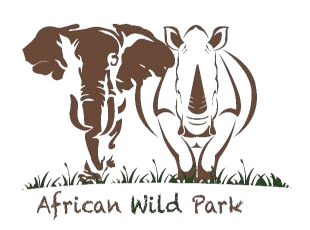Tanzania, the land of extraordinary wildlife and breathtaking landscapes, is not only rich in natural beauty but also in cultural heritage. Nestled in its diverse ecosystems are numerous indigenous tribes, each contributing to the nation’s vibrant cultural tapestry. From the pastoral Maasai to the fishing communities of the Sukuma, Tanzania’s tribes are deeply connected to their land and traditions. In this blog, we will take you on a cultural journey through some of Tanzania’s most notable indigenous tribes and their unique ways of life.
1. The Maasai: Guardians of the Savannah
Arguably the most famous of Tanzania’s tribes, the Maasai are renowned for their distinctive customs and semi-nomadic lifestyle. Traditionally, the Maasai are pastoralists, herding cattle across the vast savannahs of the Serengeti and Ngorongoro regions. Their striking red shúkà (cloaks) and intricate beadwork symbolize their status and identity.
Cultural Insights: The Maasai culture is rich with traditions, from elaborate marriage ceremonies to vibrant dances that celebrate milestones and rites of passage. Their deep-seated belief in the importance of cattle extends into their social status, and they consider livestock to be a measure of wealth. Visitors often have the opportunity to interact with the Maasai, learning about their customs and perhaps participating in a traditional dance.
2. The Hadza: The Last Hunter-Gatherers
The Hadza tribe, residing near Lake Eyasi, is one of the last remaining hunter-gatherer communities in Africa. Their lifestyle is deeply intertwined with nature as they move through the bush, foraging for wild fruits and hunting game with bows and arrows.
Cultural Insights: The Hadza’s connection to the land is profound. They rely on their extensive knowledge of flora and fauna to survive, practicing sustainable hunting and gathering techniques that have existed for thousands of years. Engaging with the Hadza tribe offers a unique glimpse into a lifestyle that has nearly vanished in today’s modern world.
3. The Chaga: Farmers of Kilimanjaro
The Chaga people inhabit the fertile slopes of Mount Kilimanjaro, where they practice agriculture, primarily growing coffee, bananas, and maize. Their semi-sedentary lifestyle contrasts sharply with the more nomadic tribes.
Cultural Insights: Chaga society is known for its rich traditions and strong community ties. Coffee ceremonies play an essential role in their culture, symbolizing hospitality and unity. A visit to a Chaga village typically includes a tour of coffee plantations, allowing visitors to see the cultivation process from bean to brew.
4. The Sukuma: The Largest Ethnic Group
As Tanzania’s largest ethnic group, the Sukuma primarily reside in the northwestern part of the country, near Lake Victoria. Traditionally agriculturalists, the Sukuma cultivate crops like millet and cassava.
Cultural Insights: The Sukuma are known for their vibrant festivals and rich music and dance traditions. The ngoma (drumming) is a vital part of their cultural identity, often featured in ceremonies celebrating harvests and initiations. Engaging with Sukuma communities offers insights into their artistic expressions and their connection to the land.
5. The Zaramo: Coastal Dwellers
The Zaramo tribe occupies the coastal region around Dar es Salaam and is heavily influenced by the Swahili culture due to their proximity to the Indian Ocean. Historically, they were fishermen and traders, relying on the sea for their livelihoods.
Cultural Insights: Zaramo culture showcases a blend of indigenous customs and Swahili influences, characterized by colorful fabrics and intricate crafts. Visitors can explore local markets to discover unique handicrafts and taste delicious seafood dishes that reflect their historical connection to trade.
Conclusion
Tanzania’s indigenous tribes are a treasure trove of cultural diversity, offering invaluable insights into traditional ways of life that have thrived for centuries. Each tribe’s unique customs, beliefs, and connection to the land contribute to the nation’s richness and complexity. By engaging with these communities, travelers not only have the opportunity to appreciate Tanzania’s cultural heritage but also to support sustainable tourism that respects local traditions. As you plan your journey through this breathtaking country, consider including cultural experiences that connect you with the heart and soul of Tanzania, leaving you with memories that will last a lifetime. Whether sharing stories with the Maasai, foraging with the Hadza, or enjoying a coffee ceremony with the Chaga, every interaction will deepen your understanding of this remarkable land and its people.

